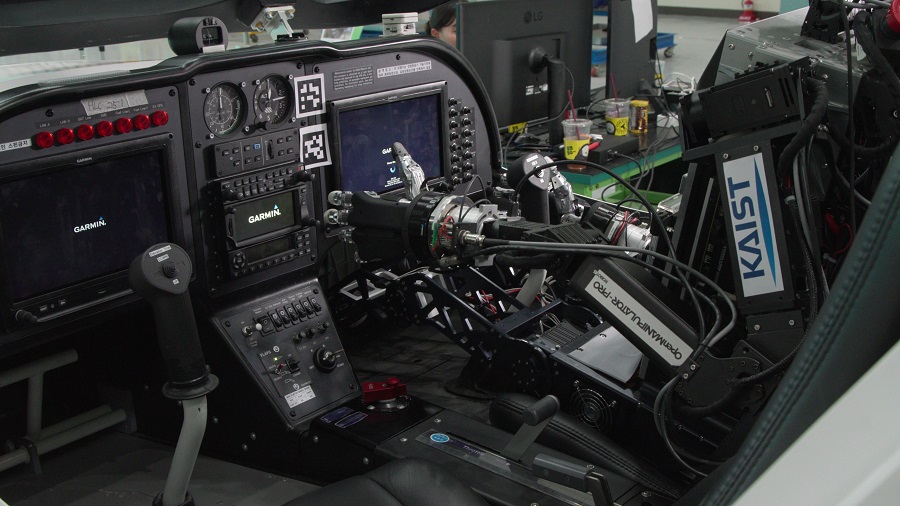Humanoid PIBOT Robot Can Fly A Plane After Just Reading The Manual
Engineers at the Korea Advanced Institute of Science and Technology (KAIST) have made a robot pilot that can pilot a plane after just reading the manual once. The robot is called PIBOT, and it sits in the plane's cockpit like a regular human pilot and uses its "hands" to control and move the flight instruments.
The engineers who built PIBOT designed it to monitor its surroundings using external cameras. The robot's high-precision dexterity also helps prevent turbulence and any other vibrations from ripping control of the aircraft away from the robot's hands. Its design means that PIBOT can fly an airplane without being completely redesigned to fit the robot.
The robot pilot learns to fly an aircraft by reading the flight manual in its natural language. From there, the 5-foot, 143-pound robot is able to take control of the aircraft and fly it just as effectively and even more efficiently than a human pilot. The engineers at KAIST say that it has enough memory to process and maintain knowledge of all Jeppesen navigation charts worldwide, something no human has accomplished yet.

On top of the knowledge it picks up by reading the flight manuals, PIBOT can also consult ChatGPT to go over the aircraft's Quick Reference Handbook, and even to see how to respond to emergency scenarios. The engineers report that it can even respond to those emergencies at a rate faster than human pilots typically can, though no hard evidence has surfaced about that just yet.
As ExtremeTech notes, these robot pilots aren't a one-size-fits-all replacement for human pilots, and it's likely we won't see any kind of widespread acceptance of these types of robots for some time. For the moment, PIBOT has only proven capable of starting up a KLA-100 and then taking off, cruising, cycling, landing, and taxiing without issue.
Future use of these kinds of robots could one day include them acting as robot pilots for spacecraft or even exploring planets and other cosmic entities more thoroughly where humans might not be able to go.
